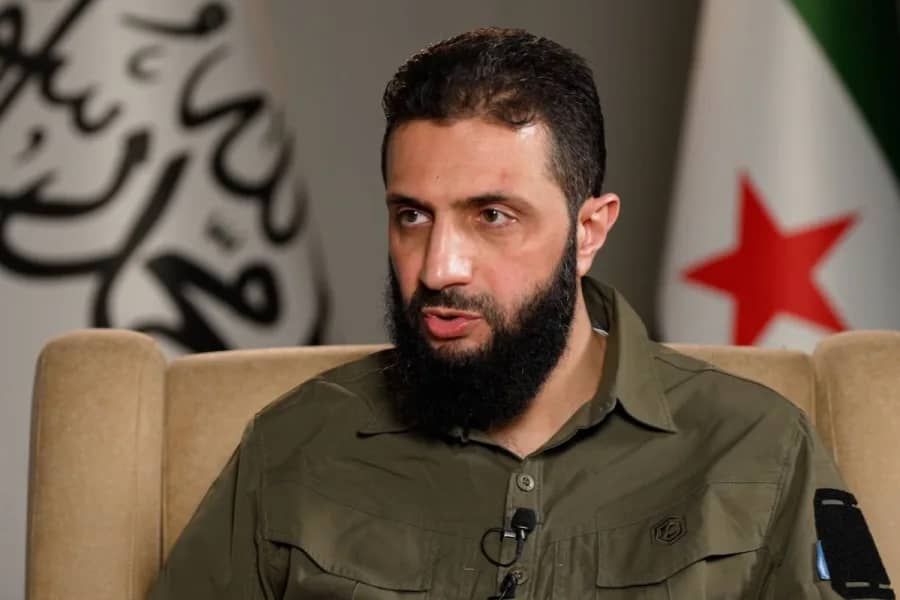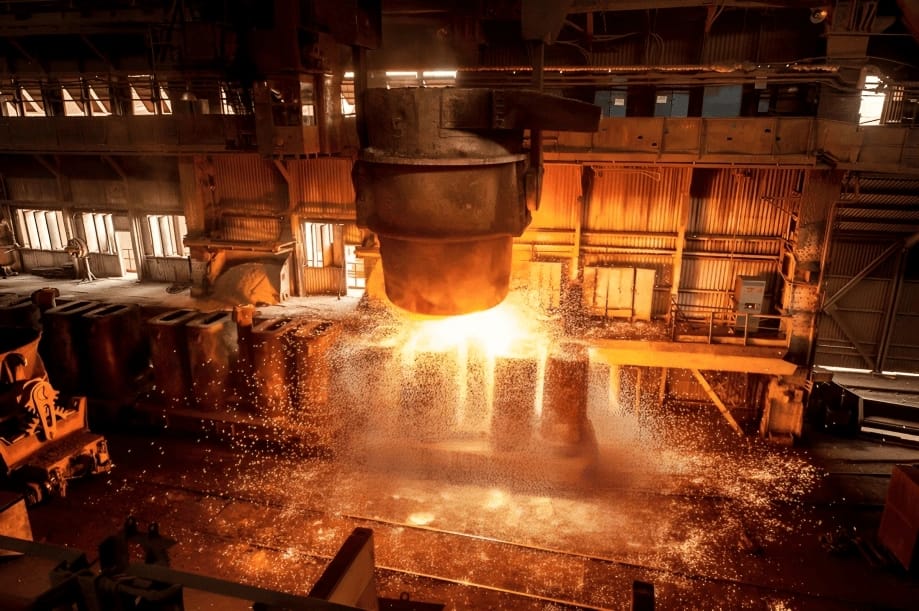Abu Mohammad al-Jolani, the leader of Hayat Tahrir al-Sham (HTS), one of the most influential and controversial jihadist groups operating in Syria, has undergone a striking evolution throughout his career. Once a committed member of the Al-Qaeda network, al-Jolani’s journey from a radical militant inspired by the 9/11 attackers to a leader of a group now trying to present itself as a more “moderate” force in Syria’s complex civil war has been marked by shifting alliances, ideological recalibrations, and strategic pragmatism.
Early Life and Radicalization
Abu Mohammad al-Jolani, born Ahmed Hussein al-Shar’a in the 1980s in Syria, hails from a middle-class background, though little is known about his early life. His rise to prominence, however, is deeply tied to the Syrian Civil War, which began in 2011. Initially, al-Jolani was drawn into jihadist circles during his time in Iraq, where he is believed to have joined Al-Qaeda in Iraq (AQI), led by Abu Musab al-Zarqawi.
Al-Jolani’s radicalization reportedly began after he was inspired by the 9/11 attacks carried out by Al-Qaeda operatives. His embrace of the jihadist cause further strengthened after seeing the U.S. military involvement in the Middle East, including the 2003 Iraq War. He was eventually trained and became a prominent figure within AQI, which later evolved into ISIS (Islamic State of Iraq and Syria), but he quickly distanced himself from ISIS in the aftermath of internal power struggles between the two groups.
Role in the Syrian Civil War
When the Syrian Civil War erupted in 2011, al-Jolani returned to Syria, joining the conflict with the aim of toppling the regime of Syrian President Bashar al-Assad. He initially joined the ranks of Al-Qaeda’s branch in Syria, which was called Jabhat al-Nusra (The Nusra Front). Nusra’s goal was to establish an Islamic state in Syria, inspired by the doctrines of Al-Qaeda.
- Jabhat al-Nusra: As the leader of Nusra, al-Jolani played a key role in building the group into one of the most powerful and formidable factions in the Syrian rebellion. Nusra was responsible for some of the fiercest fighting against Assad’s forces and became notorious for its brutal tactics. While initially trying to portray itself as a group focused on liberating Syria, al-Jolani’s Nusra Front’s actions aligned closely with Al-Qaeda’s ideology of global jihad.
- Break with Al-Qaeda: In 2016, after Ayman al-Zawahiri, the head of Al-Qaeda, ordered al-Jolani to merge his forces with ISIS, al-Jolani broke away from the leadership of Abu Bakr al-Baghdadi, the head of ISIS. Al-Jolani’s decision to maintain independence from ISIS marked a significant moment in his trajectory. The split was partly ideological, as al-Jolani preferred to retain more control over the group, but it was also tactical. ISIS’s extreme methods and internal conflicts were increasingly alienating other jihadist factions.
Formation of Hayat Tahrir al-Sham (HTS)
By 2017, al-Jolani led a major rebranding effort. After a merger of his group with other factions, he created Hayat Tahrir al-Sham (HTS). HTS was presented as a more independent and localized jihadist group that sought to distance itself from global jihadist ideologies associated with Al-Qaeda and ISIS.
HTS’s formation was an attempt to portray the group as more Syrian-centric, focused on ousting the Assad regime and establishing an Islamic governance structure that was distinctly Syrian. Although the group’s fundamental goals of Islamic rule and the toppling of Assad remained the same, al-Jolani’s new focus was on gaining local support and legitimizing his group in the eyes of the Syrian population, particularly in Idlib, where the group operates today.
- Political and Tactical Shifts: Al-Jolani also made efforts to moderate HTS’s image. He denounced terrorism and sought to downplay his group’s radical Islamist roots, publicly announcing in interviews that HTS would not target the West or other countries. Instead, he focused on rebuilding Syria and battling Assad’s forces, which he portrayed as the primary enemy.
Despite these claims, HTS still maintains its roots in Salafi-jihadism, and while the group has sought to present itself as pragmatic, it continues to engage in violent tactics and has been accused of violating human rights. However, the transformation of HTS under al-Jolani reflects an effort to remain relevant in a war that has become increasingly fragmented and complex.
Al-Jolani’s Image and Strategy
Al-Jolani has gradually shifted his public persona, from the fiery extremist leader of an Al-Qaeda affiliate to someone who attempts to appear more pragmatic, even open to dialogue with international actors. In interviews with Western and Arab media, he has sought to distinguish HTS from the more extreme elements of global jihadist movements. He has also rejected ISIS’s ideology, seeking a more nationalist appeal, particularly among Syrians, and positioning HTS as a Syrian-led, locally driven movement.
Al-Jolani’s speeches and rhetoric now often focus on the Syria-centric struggle rather than the broader global jihadist movement. He has also engaged in several public relations campaigns, presenting himself as a defender of the Syrian people, someone who is capable of stabilizing Idlib and opposing the Assad regime and its Russian backers.
Despite these shifts, al-Jolani has remained committed to some of the core principles of his jihadist ideology. His attempts to gain international legitimacy are tempered by the ongoing brutality of HTS’s operations, which includes targeting civilian areas and using coercion to maintain control over Idlib province.
HTS’s Control of Idlib and Regional Influence
Since 2017, Idlib has become the last major stronghold for Syrian rebels, with al-Jolani’s HTS maintaining dominance in the region. The group controls much of the northwestern province, which has become a haven for displaced Syrians and rebels, as well as a bastion of resistance against both the Syrian government and foreign powers like Russia.
Idlib has been a highly contested region, with the Syrian government and its Russian allies launching multiple offensives to regain control. Despite these efforts, al-Jolani has managed to maintain a stronghold in Idlib, partially through alliances with other rebel groups, and by managing relations with Turkey, which has a strategic interest in the area.
HTS’s influence in Idlib has also made al-Jolani an important player in the Syrian peace process, even though his group is excluded from most diplomatic efforts due to its extremist past. Nonetheless, al-Jolani has navigated complex geopolitical dynamics in order to retain his control over the region, and his group has at times cooperated with Turkey and other regional powers to counterbalance Russian and Assad forces.
Al-Jolani’s Personal Transformation
Al-Jolani’s evolution reflects broader shifts in the jihadist landscape in Syria. Once closely aligned with global jihadism and Al-Qaeda’s ideology, he has now carefully rebranded himself and his group as a more Syria-focused actor, attempting to gain international and regional acceptance while preserving his group’s influence.
Al-Jolani’s strategy is driven by a pragmatic approach to both power and ideology. He has understood that to maintain control and relevance in the Syrian conflict, it is necessary to adjust tactics, seek cooperation, and project an image of moderation, even if that moderation is only on the surface.
- Cautious Diplomacy: Al-Jolani has shown that he is not averse to diplomacy when it serves his interests, although he maintains his radical goals and ideology. His desire to be seen as a “Syrian nationalist” has allowed him to navigate a tricky path between Syria’s opposition, regional powers, and his own jihadist roots.
Conclusion
Abu Mohammad al-Jolani’s journey from a radical jihadist inspired by the 9/11 attackers to the pragmatic leader of Hayat Tahrir al-Sham (HTS) in Syria illustrates the complexities of the Syrian conflict and the broader jihadist movement. His transformation reflects the changing nature of militant Islam in the region, where old alliances are being redefined and new strategies are emerging in response to shifting local and international dynamics.
Al-Jolani’s continued leadership in Idlib and his attempts at presenting HTS as a more moderate force in the Syrian war will likely have lasting implications for the region’s future. His ability to balance his radical ideology with practical political maneuvering will determine how he navigates the conflict’s shifting landscape in the years to come.





